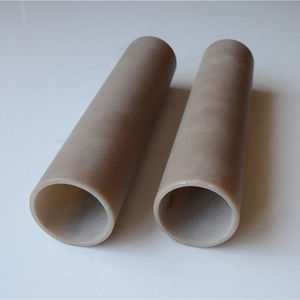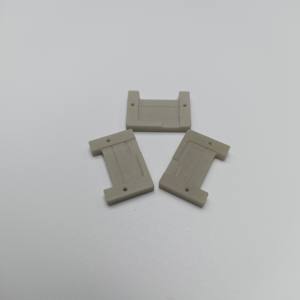Discover Premium Ceramic Products | Durability & Elegance United | Advanced Ceramics
PRODUCT PARAMETERS
Description
Overview of aluminum nitride ceramics
Aluminum Nitride Ceramic is an advanced ceramic material with aluminum nitride as the main component. It has been widely used in electronics, optics, and mechanics due to its unique properties.
Features of aluminum nitride ceramics
High thermal conductivity: Aluminum nitride ceramics have relatively high thermal conductivity, usually between 170-260 W/m·K, which makes it an excellent heat dissipation material. It is especially suitable for electronic devices that require efficient heat dissipation, such as substrate materials for power semiconductor devices.
Good electrical insulation: Despite its high thermal conductivity, aluminum nitride ceramics are excellent insulators of electricity, which can effectively prevent current leakage and ensure the safe operation of electronic components.
Low dielectric constant and dielectric loss: These characteristics make aluminum nitride ceramics very suitable for use in high-frequency circuits because it can reduce energy loss during signal transmission.
High temperature resistance: Aluminum nitride ceramics can maintain structural stability and strength at extremely high temperatures. Its melting point is about 2800°C, so it is suitable for applications in high temperature environments.
Low thermal expansion coefficient: Compared with semiconductor materials such as silicon, aluminum nitride has a lower thermal expansion coefficient, which means it has better dimensional stability when the temperature changes, which helps improve packaging reliability.
Corrosion resistance: Aluminum nitride ceramics have good chemical stability to most molten metals and are not easily oxidized or corroded, allowing them to perform well in harsh environments.
High mechanical strength: Although not as hard as some other types of ceramic materials, aluminum nitride ceramics still provide enough mechanical strength to allow them to be used in many structural applications.
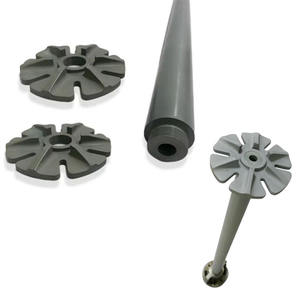
(180W/mk High Thermal Conductivity Aluminum Nitride Ceramic Pad AIN ALN Ceramic Sheet for IC MOS Tube/IGBT Chip)
Specifications of 180W/mk High Thermal Conductivity Aluminum Nitride Ceramic Pad AIN ALN Ceramic Sheet for IC MOS Tube/IGBT Chip
The 180W/mk High Thermal Conductivity Aluminum Nitride Ceramic Pad (AIN/ALN Ceramic Sheet) is engineered to supply exceptional thermal administration for high-performance electronic elements. This ceramic pad functions phenomenal warm dissipation capacities, making it optimal for applications including IC, MOS tubes, IGBT chips, and other power semiconductor gadgets. The material’s thermal conductivity reaches 180W/mk, dramatically greater than traditional porcelains like alumina. This makes sure fast heat move away from sensitive components, decreasing overheating dangers and enhancing tool dependability.
The Light Weight Aluminum Nitride Ceramic Pad operates effectively throughout a wide temperature array, from -50 ° C to 800 ° C. It preserves secure efficiency under extreme thermal tension, avoiding contortion or breaking. The material’s reduced thermal expansion coefficient very closely matches silicon, lessening interface anxiety when bound to chips or substratums. This compatibility boosts long-lasting durability in high-power circuits.
Electrical insulation is one more critical feature. The ceramic pad gives high dielectric toughness, protecting against current leak in high-voltage environments. Its non-conductive properties make sure secure procedure in circuits with voltages up to 15kV. The surface area coating is smooth, enabling seamless integration with thermal interface materials like greases or pads for optimum call.
Available in conventional thicknesses of 0.5 mm to 5mm, the item supports custom dimensions and shapes to fit specific tool designs. The pad’s chemical inertness stands up to corrosion from acids, antacid, and natural solvents, making certain longevity in rough industrial conditions. Its mechanical strength goes beyond most polymer-based thermal services, offering resistance to wear and impact during setup or operation.
Applications include power components, LED lights systems, RF tools, and automotive electronics. The Aluminum Nitride Ceramic Pad replaces standard materials like beryllium oxide, staying clear of toxicity worries while matching performance. Setup is simple, requiring no specialized tools. Compatibility with soldering and epoxy bonding methods streamlines setting up processes.
The product goes through strenuous quality screening, consisting of thermal cycling, laser scanning, and X-ray assessment. Each batch satisfies industry criteria for pureness, thickness, and defect-free surfaces. Customized metallization layers (gold, silver, or nickel) are offered for enhanced solderability or cable bonding. Packaging choices include anti-static trays or vacuum-sealed bags to stop contamination throughout storage space and transit.
High thermal conductivity, electric insulation, and mechanical robustness make this ceramic pad a trustworthy option for contemporary electronic devices demanding reliable warm administration.
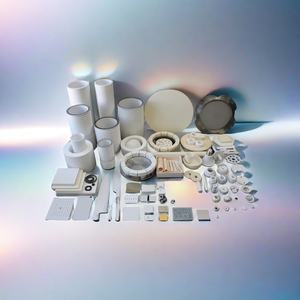
(180W/mk High Thermal Conductivity Aluminum Nitride Ceramic Pad AIN ALN Ceramic Sheet for IC MOS Tube/IGBT Chip)
Applications of 180W/mk High Thermal Conductivity Aluminum Nitride Ceramic Pad AIN ALN Ceramic Sheet for IC MOS Tube/IGBT Chip
The 180W/mk high thermal conductivity light weight aluminum nitride ceramic pad (AIN/ALN ceramic sheet) works as an efficient thermal monitoring service for digital components. It properly dissipates warmth in high-power tools like IC MOS tubes and IGBT chips. These elements generate substantial warmth during operation. Excess warm lowers performance and shortens life-span. The ceramic pad transfers heat away rapidly. This preserves steady temperature levels. It guarantees integrity sought after applications.
The aluminum nitride ceramic pad outmatches typical materials. Products like alumina or aluminum use lower thermal conductivity. Light weight aluminum nitride provides 180W/mk conductivity. This enables much faster warmth elimination. The product additionally works as an electric insulator. It stops brief circuits in portable circuits. Its high dielectric stamina fits high-voltage environments.
Industrial applications consist of power electronic devices and semiconductor systems. The ceramic pad is put between heat-generating components and heat sinks. This setup boosts cooling performance. Thermal resistance drops significantly. Components operate within secure temperature level ranges. It avoids overheating failures.
The ceramic sheet stands up to thermal shock and chemical deterioration. Abrupt temperature level changes do not damage it. Harsh operating conditions do not degrade efficiency. It maintains structural stability under anxiety. This resilience expands life span.
Manufacturers use accuracy machining for these pads. They make sure uniform thickness and smooth surfaces. Regular call reduces voids. Heat transfer enhances. The product deals with thermal interface products like oil or phase-change pads. Compatibility streamlines combination into existing systems.
Applications reach renewable resource and auto industries. Inverters, motor drives, and EV power components gain from efficient cooling. High-power LED systems additionally make use of these pads. Illumination and long life rely upon temperature level control.
The aluminum nitride ceramic pad sustains miniaturization fads. Electronic devices shrink while power thickness rise. Reliable thermal monitoring becomes important. This product addresses heat obstacles without including mass. It enables portable, high-performance designs.
Personalized shapes and sizes are readily available. Particular needs for density or dimensions can be met. This adaptability suits varied engineering needs. The ceramic pad is a practical upgrade for thermal management. It enhances efficiency throughout advanced electronic systems.
Company Introduction
Advanced Ceramics founded on October 17, 2014, is a high-tech enterprise committed to the research and development, production, processing, sales and technical services of ceramic relative materials and products.. Since its establishment in 2014, the company has been committed to providing customers with the best products and services, and has become a leader in the industry through continuous technological innovation and strict quality management.
Our products includes but not limited to Silicon carbide ceramic products, Boron Carbide Ceramic Products, Boron Nitride Ceramic Products, Silicon Carbide Ceramic Products, Silicon Nitride Ceramic Products, Zirconium Dioxide Ceramic Products, Quartz Products, etc. Please feel free to contact us.(nanotrun@yahoo.com)

Payment Methods
T/T, Western Union, Paypal, Credit Card etc.
Shipment Methods
By air, by sea, by express, as customers request.

5 FAQs of 180W/mk High Thermal Conductivity Aluminum Nitride Ceramic Pad AIN ALN Ceramic Sheet for IC MOS Tube/IGBT Chip
Aluminum Nitride (AlN) ceramic pads with 180W/mk thermal conductivity are designed for high-performance heat management in electronics. Here are five common questions about these products.
What is Aluminum Nitride? Aluminum Nitride is a ceramic material known for high thermal conductivity and electrical insulation. It efficiently transfers heat away from components while preventing electrical leakage. This makes it ideal for power devices like ICs and IGBT chips.
Why is 180W/mk thermal conductivity important? High thermal conductivity allows faster heat dissipation from heat-sensitive parts. Components like MOS tubes generate significant heat during operation. The 180W/mk rating ensures heat moves quickly to cooling systems. This reduces overheating risks and improves device reliability.
Where are these ceramic pads used? They are used in power electronics needing efficient thermal management. Common applications include IGBT modules, LED lighting systems, and semiconductor packaging. Industries like automotive, renewable energy, and telecom rely on these pads to maintain stable performance in high-power environments.
How should these pads be handled during installation? Handle them carefully to avoid cracks or chips. AlN ceramics are brittle. Clean surfaces before applying thermal interface materials. Ensure even pressure when mounting to prevent uneven stress. Follow manufacturer guidelines for torque settings to avoid damaging the pad or components.
Can Aluminum Nitride replace other materials like alumina or aluminum? Alumina has lower thermal conductivity (around 30W/mk). Aluminum conducts electricity, making it unsuitable for insulating applications. Aluminum Nitride combines high heat transfer with electrical insulation. It is better for high-power devices needing both thermal management and electrical safety.
These ceramic pads offer long-term stability in harsh conditions. They resist thermal shock and chemical corrosion. Proper use extends the lifespan of electronic systems. Users report reduced failure rates in high-temperature operations.
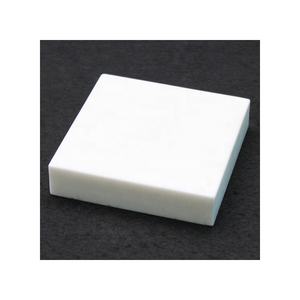
(180W/mk High Thermal Conductivity Aluminum Nitride Ceramic Pad AIN ALN Ceramic Sheet for IC MOS Tube/IGBT Chip)
REQUEST A QUOTE
RELATED PRODUCTS
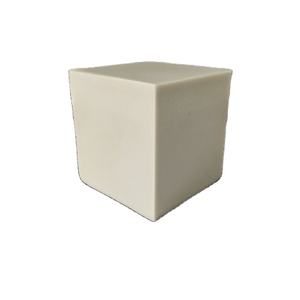
Aluminum Nitride / Boron Nitride Composite BN-AlN Ceramic Parts for Ion Source
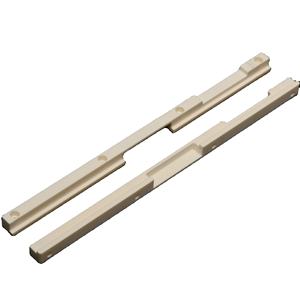
Advanced AlN Ceramic Sheet Aluminum Nitride Ceramic Plate With a Hole
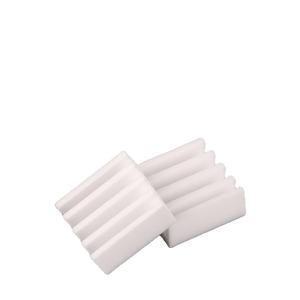
High Quality Thermal Conductive Sheet AlN Aluminum Nitride Ceramic Substrate
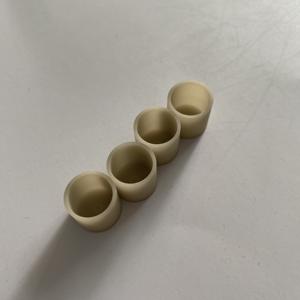
High Purity 99.95% Aluminum Nitride AlN Spherical Powder 3-5um Ceramic Microspheres Durable Heat Conductive Material

High Thermal Conductivity Aln Aluminum Nitride Ceramic Heat Sink Plate Electrical Insulation Ceramic Parts
